TechCrunch disrupt
description: annual technology conference hosted by TechCrunch, where startups launch new products and services and compete for attention and funding
34 results
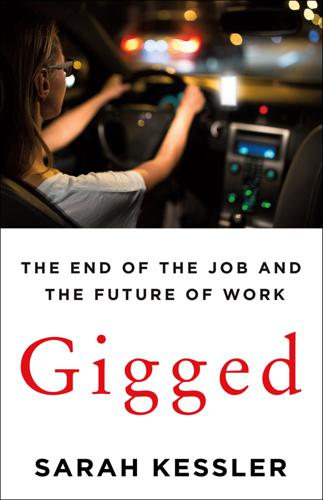
Gigged: The End of the Job and the Future of Work
by
Sarah Kessler
Published 11 Jun 2018
The more Terrence thought about it, the more he became convinced that truly making a difference in Dumas would be slow, difficult, and definitely not on-demand. CHAPTER 13 A VERY SERIOUS ISSUE On a hot day in May 2017, entrepreneurs from all over the world, including Managed by Q’s Dan Teran, packed themselves into a warehouse event space just off of New York City’s FDR Highway for TechCrunch Disrupt. Half trade show, half Shark Tank–style pitch competition, Disrupt is a tri-annual startup conference where startups with names such as Happification, Binary Mango, and Blazesoft come to get noticed by venture capitalists and the tech writers whose blogs they read. As an attendee, it’s hard to walk anywhere without acquiring a free branded T-shirt.
…
Handy as of November 2016 operated in more than 28 cities and had raised more than $110 million of venture capital. Though the latter startup’s early struggles in maintaining both customers and workers had been well documented, they hadn’t been a death sentence. Inc. magazine had recently profiled Handy’s “painful path to profitability.”1 At TechCrunch Disrupt, the stage was cordoned off from the rest of the conference by thick black curtains, but the buzz of optimistic entrepreneurs was still so loud that the audience strained to hear the on-stage conversation. Dan and Oisin would be interviewed by a third man, TechCrunch editor Jon Shieber. Both speakers wore blazers, dress shirts, and jeans—Dan’s were black, Oisin’s were denim—and, at first, they looked like teenagers forced to mingle at a dance.
…
As the potential for companies to use independent contractors expands with mobile technology and automation, it’s possible that workers could regard new types of piecemeal labor as being more like temp work. Unlike freelancers, 77% of temp workers say they would rather have a traditional full-time job.6 At TechCrunch Disrupt, Dan and Oisin clutched bottles of conference-branded water and crossed their legs, each resting a foot on a knee. Rather than answer the question about whether the gig economy was over, Oisin argued over semantics. These new developments shouldn’t be called the gig economy, he said, punctuating every beat with his free hand.

The Upstarts: How Uber, Airbnb, and the Killer Companies of the New Silicon Valley Are Changing the World
by
Brad Stone
Published 30 Jan 2017
(Courtesy of Lyft) John Zimmer, co-founder and chief operating officer of Lyft, left, and Logan Green, co-founder and chief executive officer of Lyft, have a laugh at the TechCrunch Disrupt SF 2013 conference in San Francisco on Monday, Sept. 9, 2013. TechCrunch, which runs from Sept. 9 through 11, features leaders from various technology fields and includes a competition for the best new startup company. (David Paul Morris/Bloomberg) Didi Founder and CEO Cheng Wei at Didi Offices in Beijing, China. (Ka Xiaoxi) Didi CEO Cheng Wei and President Jean Liu at a company party in February, 2016. (Courtesy of Zhang Wei / Didi) Brian Chesky and Travis Kalanick on stage at TechCrunch Disrupt in May 2011 with moderator Erick Schonfeld.
…
At one point he found himself explaining the home-sharing idea to the actress Candice Bergen; he kept thinking, “Murphy Brown came up to me. Murphy Brown knows Airbnb,” Chesky says. “It was this crescendo. It was an airplane, reaching a higher and higher elevation.” In May, Chesky met fellow traveler Travis Kalanick for the first time. At a conference in New York City called TechCrunch Disrupt, Chesky and Kalanick were invited to appear onstage together in a panel discussion titled “Disrupting Offline Businesses.” Chesky had been an Uber fan since Ryan Graves had invited him to have coffee in 2010 to solicit advice about running a startup, and he had turned his employees into avid Uber users.
…
By April, Kochman had found a few adventurous livery drivers looking to fill the dead time between rides and was testing the service across all five boroughs.1 The service quietly launched the next month at a meet-up, a gathering of the local tech community, but there were only a few cars on the road. Kochman was under a mountain of pressure. Kalanick wanted to unveil Uber’s second city to the broader public at TechCrunch Disrupt in June, where he was set to make that joint appearance with Brian Chesky. Kochman hired two employees, one to oversee driver operations and another to promote the service to riders. To spark the business, they started offering the same perks that had worked in San Francisco: drivers received iPhones with the Uber application and were guaranteed a minimum twenty-five to thirty-five dollars an hour.
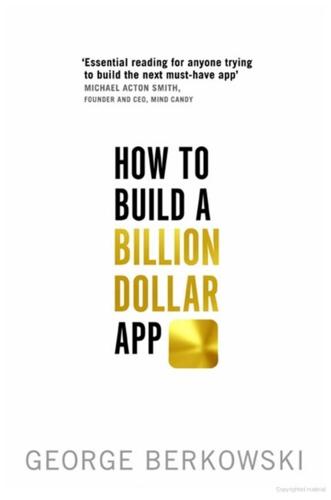
How to Build a Billion Dollar App: Discover the Secrets of the Most Successful Entrepreneurs of Our Time
by
George Berkowski
Published 3 Sep 2014
Look for Long-Haul Founders and Don’t Fear Incumbents’, article on TechCrunch.com, 2 March 2013, TechCrunch.com/2013/03/02/how-doyou-build-a-1b-consumer-company/. 3 Aileen Lee, 2 November 2013, op. cit. 4 Ibid. 5 http://www.census.gov/prod/2005pubs/p70-97.pdf. 6 Aileen Lee, 2 November 2013, op. cit. 7 To find out more about the TechCrunch Disrupt Hackathon, visit www.hackerleague.org/hackathons/techcrunch-disrupt-sf-2013. 8 Anthony Ha, ‘Tristan O’Tierney, Square’s Co-Founder and Early iOS Engineer, Leaves for Destinations Unknown’, article on TechCrunch.com, 15 June 2013, TechCrunch.com/2013/06/15/tristan-tierney-leaves-square/. 9 Jason Pontin, ‘Who Owns the Concept if No One Signs the Papers?’
…
Not only will you get a flavour for what’s hot in terms of technology, but you’ll also start to understand how software developers think and communicate. You may even be inspired by the new features and apps that other people are building. TECHNOLOGY CONFERENCES. No matter which city you live in, you’ll find a handful of great technology conferences. From TechCrunch Disrupt in New York, San Francisco and Berlin, to LeWeb in Paris, to DLD in Berlin and Web Summit in Dublin, there are countless conferences in most major cities. Go there, mingle, talk to people. And make sure that you have ‘Founder’ in big letters on your name badge (people are more likely to talk to you if they think you’re important or have your own company).
…
It’s very much a bazaar – full of mixed-quality events and people. It might take a bit of trial and error to find something great, but the point is that it has so many events that there will be one almost every week for you to attend, which means you have no excuse for not getting out there and meeting people! TECHCRUNCH DISRUPT HACKATHON. A hackathon is where developers (and designers and people with ideas) all get together and build something functional – a website, an app – in a fixed period of time. In this case it starts on Friday night and culminates with public demos on Sunday afternoon. With more than 800 people taking part – twice a year – in both New York City and San Francisco, this is also a great event.7 You get great exposure to talented – and motivated – people and, if you demo something great, you get attention from not only others in the crowd (to build up your team) but investors who are waiting in the wings to invest in your nascent venture.
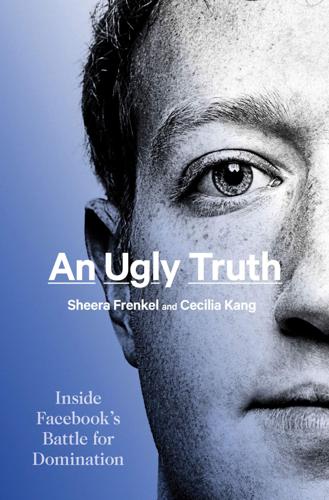
An Ugly Truth: Inside Facebook's Battle for Domination
by
Sheera Frenkel
and
Cecilia Kang
Published 12 Jul 2021
He was an intimidating figure; with his piercing eyes; rectangular glasses; dark, curly hair; and low, gravelly voice, he bore a striking resemblance to film director Sydney Pollack. Sandberg and Schrage, a Chicago native with a Harvard Law degree and a wry sense of humor, had bonded at Google. They were non-techies in an industry that looked down on MBAs and lawyers. For them, Davos, not TechCrunch Disrupt or the Wall Street Journal’s D conference, was the highlight of their year. And both voraciously kept up with the who’s-up-who’s-down rhythm of national politics. In public, Schrage presented a friendly and earnest demeanor, though he was tough with reporters and known to quibble over details in stories, sometimes barking on the phone with editors about word choices in headlines.
…
Critics panned the effort for doing little to significantly change the education system in the beleaguered city. Zuckerberg had begun to think more about his legacy and had shared with people close to him that he wanted to be remembered as an innovator and philanthropist in the mold of Gates, whom he publicly acknowledged as a personal hero in an interview at the TechCrunch Disrupt conference in 2013. Internet connectivity was the great bridge to close the gap on global economic inequality, Zuckerberg wrote in the blog. Internet access led to stronger economies and higher gross domestic product; the vast majority of the 2.7 billion people with online access were from developed Western nations.
…
See freedom of speech issues Hemphill, Scott, 229–232, 261 Hertz, Jessica, 297 Hoefflinger, Mike, 55 Holocaust deniers, Facebook policy and, 205–207, 276–278, 281 Holt, Lester, 257–258 Horowitz, Ben, 191–192 Hughes, Chris New York Times op-ed, 219–222 on origins of Facebook, 253 Wu and, 231–232 Zuckerberg’s “pivot to privacy” and, 224–227 Ifill, Sherrilyn, 255 Independent Investigative Mechanism for Myanmar, of UN, 186 Information Technology Industry Council, 165 Infowars, 204 Instagram, 7, 8, 166, 193–194, 221, 222, 253, 259, 295 Facebook’s “pivot to privacy” and, 222–224 Federal Trade Commission (FTC) and, 68 interoperability of messaging apps and, 227–228 Russian Internet Research Agency and, 133 Trump and, 267, 288–290, 292 Wu and Hemphill’s evaluation of Facebook’s acquisition of, 230–231 Zuckerberg’s broken commitment to founders of, 2, 194, 227–229 International Association of Privacy Professionals, 64–65 International Criminal Court, 185–186 Internet Association, 241 Internet Research Agency (IRA), of Russia, 130–134, 137, 143, 144–145 Internet.org, 175–177 iSEC Partners, 101 James, Letitia, 1–2, 3 “JJDIDTIEBUCKLE” (leadership principle), 246 Jobs, Steve, 48, 51, 174 Jones, Alex, 82, 204–205, 206 Kalanick, Travis, 207 Kang-Xing Jin, 51 Kaplan, Joel, 197, 241, 260, 276, 278 Biden administration and, 297–298 Cambridge Analytica and, 150 election of 2016 and, 81, 108–109, 111–112, 123, 125 Kavanaugh hearings and, 200–203 manipulated video of Pelosi and, 236, 238 personality of, 14 political contributions and, 164–165 Sandberg and, 14, 87 Trump administration and, 161, 243–247 Trump and COVID-19, 267–268, 269 Trump’s anti-Muslim rhetoric and hate speech issues, 11–15 Kaplan, Laura Cox, 200 Kavanaugh, Ashley Estes, 200 Kavanaugh, Brett, 200–203 Kaye, David, 174–175 Kellogg, Hansen law firm, 295 Kendall, Tim, 36–37, 51 Kennedy, John, 153 Kenosha Guard, 279–281 Kimmel, Jimmy, 166 King, Bernice, 254, 259 Kirkpatrick, David, 114–115 Klobuchar, Amy, 153 Kogan, Aleksandr, 152–153, 155 Koum, Jan, 194, 229 Kraff, Brian, 41 Krieger, Mike, 228–229 Kushner, Jared, 15, 243–244, 256 Kustomer, acquired by Facebook, 299 Le Pen, Marine, 118 Lean In (Sandberg), 79, 127, 157–158 Leibowitz, Jonathan, 67, 154, 199 Leone, Isabella, 131 Lewandowski, Corey, 112–113 Libra (blockchain currency), 241–242, 256–257, 300 LinkedIn, 175 London, Eric, 155 Losse, Katherine, 49, 50, 124 Lynton, Michael, 56 Ma, Olivia, 26 Mac, Ryan, 272 Macron, Emmanuel, 118, 124–125, 219, 221, 237 Martin, Jenny Beth, 81 Martin, Kevin, 80, 112 Mauer, Greg, 80, 112, 140 Mayer, Marissa, 102–103 McKinsey and Company, 41, 50 McNamee, Roger, 44, 232 Mercer, Robert, 149 MeToo movement, 150, 200–201, 203 Microsoft, 31, 165, 174, 175, 241 advertising and, 51, 53, 54 Modi, Narenda, 106 Montgomery, Kathryn, 58, 60 Moran, Ned, 95–98, 100–101, 105, 129–132, 147 Moskovitz, Dustin, 31 Mossberg, Walt, 43 Mosseri, Adam, 114, 228, 261 Moveon.org, 59 Mubarak, Hosni, 157 Mueller, Robert, 147 Murphy, Laura, 248, 249 Myanmar, hate speech against Rohingya and, 85, 169–173, 176, 178–182, 185–187, 293–294 Narendra, Divya, 21 “net neutrality,” 230 Netscape, 25, 52 New Republic, The, 287 New York Times, 88, 272, 285 Cambridge Analytica and, 149 Chester on behavioral advertising and, 59 Clegg’s op-ed in, 240 Federal Trade Commission (FTC) and, 1 Hughes’ op-ed in, 219–222 Myanmar and, 186 Russian election interference and, 130, 215 New Yorker, The, 66 Newsom, Gavin, 266 Next One Billion project, of Facebook, 176–177 Nielsen, 56 Nuland, William, 147 Nuñez, Michael, 70–79 Oath Keepers, 287–288 Obama, Barack and administration of, 11, 67, 82, 118, 121, 138, 146, 184, 230, 236, 248, 251, 252, 255 Observer, 149 Ocasio-Cortez, Alexandria, 257 Oculus VR headset, 80, 81, 190 O’Donnell, Nora, 157–159 Olivan, Javier, 194, 195, 260 Onavo, 195–196, 260 O’Neill, Catlin, 140, 236, 297 Only the Paranoid Survive (Grove), 192 Open Society Foundation, 108 Option B (Sandberg), 79, 258 Overstock, 59–60 Page, Larry, 43, 44, 65, 192 Palihapitiya, Chamath, 51 Parakilas, Sandy, 152, 164 Parikh, Jay, 9, 10 Parker, Sean, 26, 28, 44, 221 Parscale, Brad, 15, 247 Pearlman, Leah, 62–63 Pelosi, Nancy, 233–234, 297 Facebook and manipulated video of, 234–240 Pence, Mike, 290 Philippines, 85, 106, 177, 291 Phillips Exeter Academy, 19–20 Pichai, Sundar, 198 “Pizzagate,” 278 Podesta, John, 100 politics, and Facebook Biden administration and, 286, 296–298 Clegg’s policy of not fact-checking political ads, 249–252 Facebook’s PAC for political contributions, 164–165 liberal favoritism at Facebook, 12–13, 74–75, 78 political ads on Facebook, 212–214 Trump administration and Facebook executives, 243–247 see also election of 2016; election of 2020; freedom of speech issues Price, Bill, 89–92 Pritchett, Lant, 41 Proceedings of the National Academy of Sciences, 182–183 Proud Boys, 288 Putin, Vladimir, 121, 123 QAnon, 278–279, 281 Red-State Secession group, 288 Reich, Robert, 226 Reynolds, Tom, 141, 145 Rice, Brian, 141 Robinson, Rashad, 249, 251, 276–277 Rose, Dan, 44, 45, 46, 51 Rosen, Guy, 195, 260, 285 Rosensweig, Dan, 43–44 Rubio, Marco, 161 Russian disinformation, on Facebook platform, 3, 282 Congressional interest in, 127–128, 133–134, 139–145 Facebook board of director’s interest in, 134–137 Facebook employees and, 190 Facebook public relations team and, 208–215 Facebook’s security team’s investigation of, 117–127 French election of 2017 and, 118, 121 Russian Internet Research Agency and, 130–134, 137, 143, 144–145 Sandberg and, 215–217 U.S. election campaign of 2016 and, 95–101, 105–109, 124–125, 248 Zuckerberg and, 196, 204, 215–217 Ryan, Paul, 78 Sai Sitt Thway Aung, 169 Sandberg, Michelle, 43, 44 Sandberg, Sheryl backlash to Lean In and, 157–158 behavioral advertising and data collecting, at Facebook, 2–3, 45–46, 51–56, 59, 60–63, 67, 87, 225 Biden administration and, 297 books by, 79, 127, 157–158, 258 Cambridge Analytica and, 153, 154–156, 159, 160–161 Capital Building storming in January 2021 and, 286–287 Congress and, 153, 170–171, 197–200 Couric’s interview of, 258–260 cyber security and, 97–98, 210 diversity and gender equity and, 50, 202–203, 273 education and professional positions before Facebook, 39–43, 46–47, 50, 52–53 election of 2016 and conservatives, 82–83 election security and, 210 Facebook and privacy, 67 Facebook’s earnings call in 2021 and, 298–299 Federal Trade Commission (FTC) and, 45, 295, 296 Goldberg’s death and, 79–81, 233 hate speech issues and, 11–14, 275–277 Hillary Clinton and, 79, 111–112, 243–244 Instagram and WhatsApp and, 228–229 Kaplan and, 14, 87 Kaplan and Kavanaugh hearings and, 201–202 manipulated video of Pelosi and Facebook debates about, 234–240 meets Zuckerberg, 4 Nuñez’s reporting and, 79 organizational changes in 2018 and, 194 parents and siblings of, 41, 44 Pelosi and, 233–234 personal life of, 41, 43, 258, 295 personality of, 2, 45, 199–200 as protective of her image, 4 reaction to emotional contagion research, 183 response to criticisms of Facebook, 156–157 responsible growth and, 86 Russian disinformation investigation and, 118–119, 120, 121, 122–123, 126, 127–128, 134, 136, 139, 143–144, 147, 196–197 Schrage and, 87–88, 89–92 Stamos and, 10–11, 103–104 Zuckerberg hires, 43–48 Zuckerberg’s working relationship with, 54–57, 86–87, 190, 260–261 Sanders, Bernie, 100, 132, 140, 221, 226 Sandy Hook Elementary School, shooting at, 82, 157, 204–205 Sanghvi, Ruchi, 32, 34, 274 Saverin, Eduardo, 30 Scavino, Dan, 243 Schatz, Brian, 166, 236 Schiff, Adam, 140, 142–144 Schissler, Matt, 171–173, 177–182 Schmidt, Eric, 42, 44, 46, 62, 192, 207 Schrage, Elliot Definers Public Affairs and, 216–217 Russian disinformation and, 119, 123, 125–126, 134–135 Sandberg and, 87–88, 89–92 Schumer and, 66–67, 88 Trump’s 2015 anti-Muslim rhetoric and hate speech issues, 12, 13 Schroepfer, Mike, 194, 291 Schumer, Chuck, 66–67, 68, 88 Scott, Kim, 47 Secureworks, 98 Segall, Laurie, 160 Sidley Austin law firm, 295 Smith, Matthew, 185–187, 294 Snapchat, 240, 253 Snowden, Edward, 8 Sorkin, Andrew Ross, 156 Soros, George, 108, 156–157, 215–216, 226 South Park Commons, 274 Sparapani, Tim, 65, 66 Sperling, Gene, 248 Stamos, Alex background before Facebook, 101–103 election of 2020 and, 283–284 investigation and report on Russian meddling and disinformation, 97, 100, 103–107, 116, 117–127, 130, 132, 145–147 2015 report on security of user’s information, 7–11 2018 Facebook reorganization and, 194 as “warranty canary,” 103, 134, 145 Standard Oil, Facebook’s parallel with, 230 Steyer, Jim, 89, 91, 232, 261, 275–276 Stop the Hate for Profit, 275 “Stop the Steal” groups, 288, 292 Stretch, Colin Cambridge Analytica and, 150 Russian disinformation and, 97, 100, 107, 119–120, 125, 135, 144–145, 146, 147 Students Against Facebook News Feed, 34, 35 Sullivan, Joe, 103–104 Summers, Lawrence, 39-42, 47 Swisher, Kara, 29–30, 43, 203–208 Systrom, Kevin, 194, 228–229 Talking Back to Facebook (Steyer), 89, 91 TechCrunch, 64, 65 TechCrunch Disrupt conference, 88, 174 Thiel, Peter Facebook’s board of directors and, 30, 81, 86, 202 Gawker lawsuit and, 202 Zuckerberg and, 25, 29, 31, 206, 244, 256 ThreatConnect, 98 Tiger, Roi, 195 TikTok, 240, 245, 253 Tillery, Kristopher, 20 Time magazine, 127, 177 TPG Capital, 89 Traynham, Robert, 271 Trump, Donald J., 213, 221, 232 Access Hollywood tape and, 100 accusations of voter fraud in 2020 election and, 273–275, 283–285, 290 accused of inciting violence in January 2021 and banned from Facebook, 286–292, 294 anti-Muslim rhetoric and hate speech and, 11–17, 85, 249 comments after George Floyd’s death, 268–273 Facebook and COVID-19 and, 267–268 hackers and 2016 campaign, 105–106, 140 meeting with Facebook executives, 161, 243–247 number of Facebook followers and interactions with, 244, 283 Pelosi and, 234, 235 on Twitter, 232, 244–245, 268–271, 276 Zuckerberg and, 256 Twitter, 15, 37, 63, 75, 98, 231, 240, 253, 287 Cambridge Analytica and, 153 election interference and, 98, 142, 144–145 privacy and, 56, 63–64 Sandberg and, 197–198 Trump and, 232, 244–245, 268–271, 276 Ukraine, Bidens and, 251 United Kingdom, Brexit and, 154 Vaidhyanathan, Siva, 61 Vargas, Jose Antonio, 66 Verge, the, 272 Villarreal, Ryan, 73, 76 Vladeck, David, 199 Vox, 154, 166 Walk Away campaign, 292 Wall Street Journal, 1, 43, 47–48, 88 Walz, Tim, 268 Warner, Mark, 127–128, 132, 246 Warren, Elizabeth, 221, 226, 242, 259, 295 Washington Post, 24, 26–29, 30, 47, 84, 141, 164–165, 234, 236, 272 Wasserman Schultz, Debbie, 100 Waters, Maxine, 256–257 WeChat, 175, 245 Weedon, Jen, 108–109, 129, 147 Weibo, 175 Wexler, Nu, 83 What You Do Is Who You Are (Horowitz), 191–192 WhatsApp, 71–72, 166, 193–194, 221 data security and, 8, 222 Facebook’s acquisition of, 196, 295 Federal Trade Commission and, 68 interoperability of messaging apps and, 227 “pivot to privacy” and, 222–224 Wu and Hemphill’s evaluation of Facebook’s acquisition of, 230–231 Zuckerberg’s broken commitment to founders of, 2, 194, 227–229 Whetstone, Rachel, 204, 206–207 Wicker, Roger, 162 Williams, Maxine, 272–273 Willner, Dave, 92–93 WilmerHale law firm, 160, 197 Winklevoss, Cameron, 21 Winklevoss, Tyler, 21 Wirathu, Ashin, 172 Women@Google, 50 World Anti-Doping Agency, data stolen from, 99 Wu, Tim, 229–232, 261 Xi Jingping, 176 Yahoo, 8, 26–27 global expansion and, 42, 175 Goldberg and, 43–44 offer to buyout Facebook declined by Zuckerman, 30–32, 44 Stamos and, 101–103 Yang, Jerry, 42 Zients, Jeff, 297 Zuboff, Shoshana, 3, 61 Zucked (McNamee), 232 Zuckerberg, Ethan, 163 Zuckerberg, Mark Beacon feature and, 57–63 Black Lives Matter memo and, 71–73 Cambridge Analytica and, 16, 153, 154–156, 160, 204 coding at Phillips Exeter, 19–20 “company over country” and, 124 cyber security and, 97–98 decline of Yahoo’s buyout offer, 30–32, 44 earnings call in 2021 and, 298–299 election of 2016, 113–116 election security and, 210 employees’ internal conversations and, 70 Federal Trade Commission (FTC) and, 295–296 free speech issues and, 74–75, 252–261, 263, 269, 281 goals of global expansion and end of economic inequality, 173–177 Goldberg’s death and, 79 hate speech and disinformation issues, 11, 193, 204–208, 275–277 hearing regarding Libra and, 256–257 Kaplan and Kavanaugh hearings and, 201–202 Kaplan’s organization of dinners with politicians, 243–247 manipulated video of Pelosi and, 236–240 meets Sandberg, 4 News Feed and apology for, 32–36 Nuñez’s reporting and, 79 personal privacy and image guarded by, 4, 65–66 personality of, 29–30, 45–46, 48–49 philanthropy of, 174, 262 “pivot to privacy” and reactions to, 222–227, 235 plans for Facebook’s future, 299–300 portrayed in attorneys general complaint, 2 public opinion and, 257–258 reaction to Hughes’ New York Times op-ed, 219–222 reaction to Stamos’ 2015 report on data security, 7, 8–10 reorganization of Facebook in 2018 and, 193–194 responsible growth and, 86 reversing of promises made when acquiring Instagram and WhatsApp, 2, 194, 227–229 Russian disinformation investigation and, 117, 118–119, 120, 121, 126, 134, 136–137, 139, 142, 147, 196, 204 Sandberg’s hiring and, 43–47 testimony before Congress, 150–151, 153, 160–167, 210 Trump banned by, 290–292, 294 “wartime” leadership philosophy and, 189–193, 207 working relationship with Sandberg, 54–57, 86–87, 190, 260–261 yearly goals of, 261–263 About the Authors Sheera Frenkel covers cybersecurity from San Francisco for the New York Times.
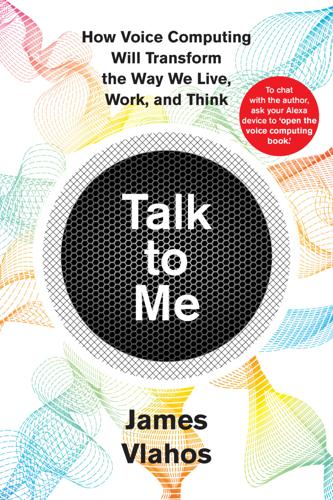
Talk to Me: How Voice Computing Will Transform the Way We Live, Work, and Think
by
James Vlahos
Published 1 Mar 2019
Viv then uses Wine.com to determine that those ingredients pair well with full-bodied cabernets. Viv also checks an address book for the brother’s location and uses MapQuest to calculate a driving route—complete with a detour to the closest wine store. Onscreen, Viv shows the directions and lists suitable wines by price. At the TechCrunch Disrupt conference in May, Kittlaus took the stage to publicly demonstrate Viv for the first time. When it came to making bold claims, he didn’t bite his tongue. “This is software that is writing itself,” Kittlaus said. Samsung, the consumer electronics and phone manufacturer, apparently agreed that Viv was onto something big.
…
Afterword: The Last Computer 278 “Alexa is the AOL of voice”: Sophie Kleber, interview with author, July 11, 2018. 279 “I don’t think people can remember”: Adam Cheyer, interview with author, April 23, 2018. 279 “This is a race”: Dag Kittlaus, “Beyond Siri: The World Premiere of Viv with Dag Kittlaus,” presentation at TechCrunch Disrupt New York, May 9, 2016. 280 “bumbling” and “embarrassing”: Geoffrey Fowler, “Siri, already bumbling, just got less intelligent on the HomePod,” Washington Post, February 14, 2018, https://goo.gl/XTzHJz. 280 “Apple’s biggest missed opportunity”: Dwight Silverman, “As HomePod sales start, Siri is Apple’s biggest missed opportunity,” Houston Chronicle, February 6, 2018, https://goo.gl/pVs6Kv. 280 “embarrassingly inadequate”: Brian X.
…
See also natural-language systems Bell Laboratories and, 70 Edison’s talking dolls, 69 humanness of, 14–15, 285–86 machine translation, 71–72 robots, 65, 70 synthetic speech contraptions, 9, 65–67 tales of, 9, 63–65, 68 telephone invented, 68–69 Westinghouse and, 70 talking toys, 69, 169–82, 229–30, 234–35 Tamagotchi, 191 Tay, 109 Taylor, Jen, 120 TechCrunch Disrupt conference (2016), 55 Teddy Ruxpin, 170 teraphim, 64 Tess (therapist chatbot), 246 text-based interactions, 51–52, 56–57 ticket bots, 58 Tiny Multi-User Dungeon (TinyMUD, video game), 80–82 Toyota Mirai, 107–8 ToyTalk, 172, 173 Traum, David, 273 True Knowledge, 200–204 Trump, Donald, 108, 115 Tunstall-Pedoe, William, 198–204, 220 Turing, Alan, 71, 80 Turing test, 80, 81–82, 83, 275 Turkle, Sherry, 191–92, 195, 239–40 Twitter, 108, 109, 147, 149, 216–17 2001: A Space Odyssey (film), 27, 74, 110 U unit selection synthesis, 111–12 University of Chicago, 217 University of Montreal, 143, 148–51, 153 University of Washington, 143, 151–53, 156, 158–59 unstructured data, 205 Urban, Margaret, 112 USC Shoah Foundation, 272 U.S. military, 22–23, 42 U.S. presidential election (2016), 216 V Vanguard, 24 Vaucanson, Jacques de, 19 verbally stated goals (VSGs), 20 Verne, Jules, 68 video games, 78–82 Vinyals, Oriol, 105–6, 254 virtual assistants.
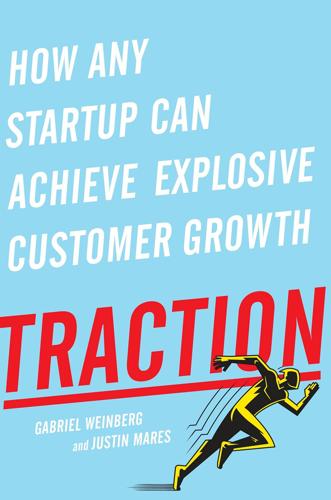
Traction: How Any Startup Can Achieve Explosive Customer Growth
by
Gabriel Weinberg
and
Justin Mares
Published 5 Oct 2015
Each year hundreds of startup-related conferences and thousands of business conferences are held worldwide. You can benefit from a conference in any startup phase. In phase I, where smaller groups of people can move the needle, attending meetups and events is a prime way to do so. Tech startups in phase II can take advantage of larger tech conferences like TechCrunch Disrupt, Launch Conference, and SXSW to build on their existing traction. Twitter launched nine months before SXSW in 2007 and was seeing decent amounts of traction, on the order of several thousand users. Because many of its early users were headed to SXSW, Twitter saw the conference as an opportunity to accelerate its adoption.
…
See A/B testing Spolsky, Joel, 199, 201 sponsored blogs, 44–46, 47 sponsored links, 80 Spoonemore, Brenda, 143–44 spreadsheets, 32–33, 43 Sprout Social, 6 SpyFu, 69 Stack Exchange, 7, 199 Stack Overflow, 7, 199–201 standard partnerships, 138, 139–41, 145 Startup Digest, 199, 201 Startup Lessons Learned, 185 StumbleUpon, 80 supply partnerships, 139 SureStop, 7, 175, 177–78, 180–81 Suster, Mark, 106, 154, 178–79 SXSW, 45, 63, 184–85 Tapjoy, 169 Target, 160 target customers, of offline ads, 83–84, 91 targeting blogs, 3, 25, 29, 31, 42–47, 209 Mint and Noah Kagan, 42–45 tactics, 46–47 targets, 47 TechCrunch, 3, 48–51 TechCrunch Disrupt, 184 TechShop SF, 188 term sheets, 143–44 testing channels. See traction testing testing SEM, 66–68, 73 Thiel, Peter, 19–20 tiered payout programs, 164 time lines, for sales, 143, 155, 158 Today (TV show), 58 tracking offline ads, 84, 91 traction defined and use of term, x–xi, 1–2 framework for.
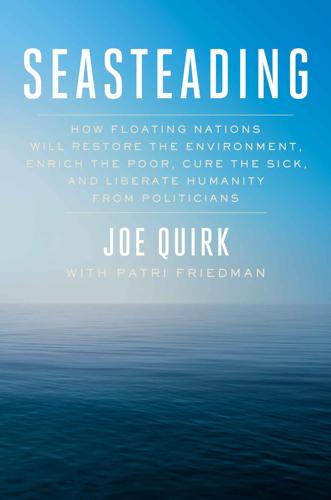
Seasteading: How Floating Nations Will Restore the Environment, Enrich the Poor, Cure the Sick, and Liberate Humanity From Politicians
by
Joe Quirk
and
Patri Friedman
Published 21 Mar 2017
Without any politician planning it, without most people even knowing about it, humanity has burst headlong onto the Blue Frontier, where a teenager named Max Lock plans to put the power of more than a hundred thousand ships in the palm of your hand. Ask yourself: Can a high school kid overthrow the global shipping industry? Generation Flow TechCrunch Disrupt is a yearly conference where entrepreneurs compete onstage in front of seven venture capital investors who interrogate them before media cameras, a live audience of thousands, and an online audience of millions. In 2014, a few weeks after he graduated from high school, Max Lock took the stage in front of this intimidating audience and told his story.
…
Max’s ice cream business grew so large that he decided ordering Dixie cups was too expensive, so he began importing ice cream cups directly from manufacturers in China. Max quickly became fed up with freight brokers, the middlemen who control the shipping market by keeping the process opaque, unreliable, and time consuming, while charging large markups. “This is incredibly frustrating,” eighteen-year-old Max told his audience at TechCrunch Disrupt. “Any industry that delivers poor service for a high price deserves to be disrupted, and that’s why I created Shipstr.” Though still a teen, Max founded an online supply chain logistics service that gives the customer access to the same information the shipping broker sees. “Today what takes days, Shipstr does in minutes.”
…
Anna’s Medical Mission, 242 Star Trek (tv show), 169 start-ups, 28, 30, 36, 37, 140, 148, 216, 228–29, 236 see also specific start-ups stem cell treatment, 238–39 Stephens, Donald, 233 Stephens, Keyon, 233 Stiglitz, Joseph E., 204 Story of Civilization, The (Durant), 289 strategic incrementalism, 59 Straub, Mike, 154 Strong, Michael, 188, 197, 198–99 Sub-Biosphere 2, 173 subsidies, 93 Summers, Larry, 27 Summer Youth Olympics, 9 Sun Microsystems, 29 surveys, 11, 50, 57–59 sushi, 116 Swaminathan, Monkombu Sambasivan, 68 swordfish, 104, 157 symbiosis, 49 Synopsys, 131 Tahiti, 149 Tahiti Field (oil production platform), 19 Taiwan, 157, 195 Takahashi, Patrick Kenji, 54 on closing growth cycle, 122, 143, 158 on floating cities, 143, 144 on hurricanes, 158–59 influence on Blue Revolution, 56, 126–27, 143 introduces Hard Minerals Act, 159–60 on oceans as solar collectors, 144–49 on OTEC, 149–52, 156, 158 on whale sharks, 157–58, 159 Takeuchi, Massaki, 174, 176, 179 Tanka people, 267 Tao Ju, 168 taxes, 260–61 Taylor, Brad, 284 TechCrunch Disrupt (conference), 26 TEDMED (medical conference), 167 telemedicine, 221, 232, 241 teosinte, 81 TerraVia (formerly Solazyme), 135 territorial waters, 11, 13, 264, 270 Tesla Motors, 29, 169 Tetanus (spinoff from Ephemerisle), 35 Thailand, 19, 90, 176, 227 thalassocracy, 267 “thalassophilanthropy,” 23 thalassotherapy, 23 Thiel, Peter, 27–29, 38, 57, 169, 212–13, 216, 241, 263 Thiel Fellowship, 27 Thiel Foundation, 29, 57, 58, 288 3-D printing, 167–71 Time, 121 Titan (spinoff from Ephemerisle), 34–35, 36 Titanic (movie), 124 Titanic (ship), 65, 120, 161 Tocqueville, Alexis de, 214 tofu, 114 tofu shark, 157 Tokyo Bay, 9, 175 Tokyo Bay Aqua-Line, 173 topsoil, 82 Touchstone Research Laboratory, 76 “Tragedy of the Commons, The” (Hardin), 106 Transcend Biomedical, 131 Triton City (floating city), 24 trochus (sea snail), 107 trophic steps, 111, 122, 133, 157, 163 Tsukiji Hotel, 173 tsunamis, 257–58 Tufts Energy Competition, 213 tuna, 104, 111, 157 20 Under 20 community, 216 TwoXSea, 116 typhoons, 12, 172, 173 Ultimate Resource The (Simon), 7 Umihotaru (artificial island), 173 Undercurrent News, 127 Unilever, 70, 135 United Nations: Convention on the Law of the Sea (UNCLOS), 13, 264 Food and Agriculture Organization, 49, 70, 104, 158 Human Development Index (HDI), 201, 295 International Labor Organization (ILO), 265 and international law, 303 International Tribunal on Maritime Law, 264–65 political entities in, 265 sovereignty for seasteaders, 17, 177 Third Global Biodiversity Outlook, 104 UNESCO (United Nations Educational, Scientific, and Cultural Organization), 259 UNICEF (United Nations Children’s Fund), 238 on water use, 67, 68 World Environment Day, 132 Uptightan (spinoff from Ephemerisle), 34–37 urchins, 84 United States, health care costs in, 221–25, 226 US Compassionate Home Health City, 233 US Oosterschelde Barrier, 41 US Steel, 137 van Buren, Remko, 43–44 van de Camp, Paul, 25, 26 van Dongen, Teresa, 261 van Helmont, Jean-Bapiste, 73 Velella (hydrozoan), 118 Velella Mariculture Research Project, 115, 118–21, 149 Venice, 267–68, 283 Venter, Craig, 122 VeriFone, 131 video cameras, 23 Virage, 130 Virgin Group, 268 Virtual Watch Room, 262 Vivaldi, Antonio, 268 Wachowiak, Helmut, 222 Wachtstetter, Lee, 16–17 Wall Street Journal, 231 Wang, Ning, 290 War of the Worlds, The (movie), 272 wars, 132, 166, 267, 270 Washington, George, 287, 290 wastewater treatment plants, 43 water, 5, 65, 67–68, 260 water bankruptcy, 67 Waterstudio, 9, 21, 25, 44, 45–46, 172 Waterworld (movie), 272 wave energy converters, 18 websites, 10, 57, 84, 121, 177, 235, 246, 248, 265 see also specific websites Wei, Peter, 225–28 Weinger, Paul, 59 Welthungerhilfe (World Hunger Aid), 85 whale sharks, 157–58, 159 wheat, 68, 78–79, 80, 81, 92, 139 Wheat Revolution, 92 Willauer, Heather, 136 Williams, John, 136 wind turbines, 18, 261 WineBid, 265 WinSun, 168 Wisconsin State Journal, 229 Wolff, James, 170 Wolf Hilbertz process, 178–79 Wong, Alan, 116 Woodman, Josef, 223 World Bank, 70, 72, 128, 185, 188, 191, 201, 203, 298 World Development Report 2000/2001: Attacking Poverty, 69 World Economic Forum, 204, 206 World Health Organization, 234 World Hunger Aid (Welthungerhilfe), 85 Worlds in Transition: Evolving Governance Across a Stressed Planet (Camilleri & Falk), 280 World Wildlife Fund, 127 Wright, Orville, 38 Xiaogang Village, 214–15 XPRIZE Foundation, 65 Xu Xiaoping, 216 Yammer, 28, 29 Yelp, 28, 29 YouTube, 29, 212 Zafar, Ali, 203 Zanzibar, 85, 89, 155 Zhai, Baoguang, 122, 209–16 ZhenFund, 216 Zocdoc, 28 Zuckerberg, Mark, 212, 235 Zynga, 28 Free Press An Imprint of Simon & Schuster, Inc. 1230 Avenue of the Americas New York, NY 10020 www.SimonandSchuster.com Copyright © 2017 by The Seasteading Institute All rights reserved, including the right to reproduce this book or portions thereof in any form whatsoever.

I Hate the Internet: A Novel
by
Jarett Kobek
Published 3 Nov 2016
This billboard advertised RingCentral, which was a company that offered cloud-based phone systems. RingCentral had raised funding from the venture capital firm Sequoia Capital. (14) TAKE A BREAK FROM HAVING IT ALL TO ENJOY IT ALL. This billboard advertised the Bay Club, a chain of private fitness clubs and spas located throughout the Bay Area. (15) TechCrunch DISRUPT SF 2013 This billboard advertised the TechCrunch DISRUPT 2013 San Francisco conference. TechCrunch was a website that provided biased, pro-industry pseudojournalism about developments in imaginary technologies. DISRUPT was the name of TechCrunch’s many conferences, after disruptive innovation, a popular Silicon Valley concept developed by a Mormon who believed, literally, that he was in verbal communication with God

The Contrarian: Peter Thiel and Silicon Valley's Pursuit of Power
by
Max Chafkin
Published 14 Sep 2021
“The one very positive thing about the movie is that it is going to encourage—in spite of the worst intentions of the producers—it will encourage a lot of people to go into the tech industry,” he said at the time. “So, on that, I think it’s a very positive thing.” He started a press push at TechCrunch Disrupt, a widely attended tech conference in San Francisco put on by the news site TechCrunch, a few days before the film’s release. While onstage, he criticized the film, and then announced that, like the unwitting producers of The Social Network, he was going to do his part to entice aspiring Zuckerbergs into tech.
…
The last one, which had been started by Thiel’s PayPal cofounder Max Levchin, was known for something called SuperPoke, which allowed users to virtually “slap,” “punch,” and “grope” their Facebook friends and was about as far from the Randian ideal as one could imagine. There was a similar disconnect between rhetoric and reality with the Thiel Fellowship, as the lucky teenagers who’d been selected would soon discover. Thiel’s announcement at TechCrunch Disrupt of a major fellowship, for which two dozen people would upend their lives to accept, had not been the product of some sort of deep consideration but had been first conceived on a flight back to San Francisco the day before the conference. And though Thiel had certainly been brooding on problems with higher education, the problem he was actually trying to solve—as one of his close advisers would acknowledge years later in an interview with City Journal, the conservative magazine—was much more pedestrian.
…
J., 198 Sinclair, Upton, 14 Singularity Institute, 138–39 60 Minutes, 170 Slack, 309 Slate, 160, 287 Slide, 164 Social Media Summit, 300 Social Network, The, 107, 109, 159–60, 164, 174, 277 Sohmers, Thomas, 166 Solana, Mike, 331 Sollitto, Vince, 83, 274 Sorkin, Aaron, 107, 159, 164, 230 Sorkin, Andrew Ross, 326 Soros, George, 100 South Africa, 5, 18, 56 apartheid in, 5–6, 18–19, 24, 176, 178 Southern Poverty Law Center, 139, 203, 231 Sovereign Individual, The (Davidson and Rees-Mogg), 175, 208–9 Soviet Union, 5, 33, 53, 112, 171, 239 Space Force, 290 SpaceX, viii, xv, 121–22, 163, 234, 235, 247, 249, 285, 309–10 Spacey, Kevin, 98 Spassky, Boris, 7 Spencer, Richard, 203, 204, 231, 255 Spitzer, Eliot, 82 Spotify, xiii Squatty Potty, 180 Srinivasan, Balaji, xvii–xviii, 205, 209, 253–54, 308, 309 Stanford Daily, 13, 34, 47 Stanford Law School, 26, 39, 33–34, 37–38 Stanford Review, 24–26, 29, 31–37, 41, 43, 52, 53, 60, 70, 77, 83, 84, 89, 99, 101, 113, 141, 172, 186, 198, 279, 280, 312, 331 Stanford University, 13–14, 26–27, 29–37, 39, 40, 55, 277 Associated Students of Stanford University, 24 Black hair course at, 26, 344n conservativism at, xii, 14–15, 30–31, 33 Jobs’s commencement speech, 334 Thiel as instructor at, 169–72, 176, 274 Thiel as student at, 10, 11, 13–26 Western Culture course at, 25–26, 32 Stat, Lauren Friedman, 312 State Department, 247 Steckman, Matthew, 151 Stephens, Trae, 283, 285 Stephenson, Neal, 52–53 Stillwell, David, 219 Stokes, Carl, 4 Stoller, Matt, 329–30 Stoppelman, Jeremy, 232, 274–76 Strachman, Danielle, 165, 169 Strauss, Leo, 30, 94 Stripe, xiii, 309, 331 Students for Liberty, 181 Sullivan & Cromwell, 38–40, 43, 82 Supreme Court, U.S., 39, 43, 240, 250 surveillance, 116, 119, 154, 276, 285 Swisher, Kara, 125 Taft Club, 203 TaskRabbit, 189, 190 Tate, John, 354n Tea Party, viii, 24, 178, 179, 184 TechCrunch, 160 TechCrunch Disrupt, 160, 164, 169 Tech Workers Coalition, 267–68, 286 Tenet, George, 116 Terrill, Ashley, 229, 233 terrorism, 111–14, 116, 119, 142, 154 Al Qaeda, 113, 146 bin Laden’s killing, 151–55, 215 9/11 attacks, see 9/11 attacks Tesla Motors, 105, 120–22, 249, 258, 316 thalidomide, 254 Thank You for Smoking, xvi, 121 Thiel, Klaus (father), 2–6, 8, 17, 238 Thiel, Patrick (brother), 4, 17 Thiel, Peter chess played by, 7–8, 17, 18, 21–23, 43 childhood of, 1–9 Christian faith of, 20, 327 commencement speech at Hamilton College, 334–36 conservatism of, ix, xi–xii, 17, 24, 30–31, 41, 120 as contrarian, xv, 95, 121, 122, 128, 177, 188, 229, 234, 327, 329, 335–36 as derivatives trader, 39 The Diversity Myth, 40–42, 47, 53, 145, 202, 252, 344n in driving incident, 22–23 education of, 5–7, 9–10 “The Education of a Libertarian,” 140–41 as hedge fund manager, 43, 47–48, 73, 74, 91, 95–96, 100–105, 122, 133, 135, 162, 307 in high school, 9–10 homes of, 96–97, 104, 207–8, 305, 306, 330 ideological compromises of, 95 image change of, 162–64 inconsistencies of, 329 influence of worldview of, xiv, xviii IRA of, 212–13, 313 isolation and loneliness of, 214 law career of, 37–39, 43 libertarianism of, xiv, 52, 80, 83, 94, 112, 122, 140–41, 209, 250 Machiavellian tendencies of, xvii, 120, 329 management style of, 132 marriage of, 272; see also Danzeisen, Matt name used as verb, xviii New Zealand citizenship of, 210, 306, 307 “The Optimistic Thought Experiment,” 130–31, 307 parenthood of, 302, 330 partying of, 207 “PC to Employment,” 29, 33, 34 as prepper, 208, 307 as provocateur, 18, 135, 177 at Stanford Law School, 26, 29, 37–38 at Stanford University, 10, 11, 13–26 Stanford University class taught by, 169–72, 176, 274 wealth of, vii–viii, xii, 95, 135 “What Happened to the Future?”

Lab Rats: How Silicon Valley Made Work Miserable for the Rest of Us
by
Dan Lyons
Published 22 Oct 2018
Yet famous CEOs were getting fired, retailers were vanishing like Spinal Tap drummers, and even some of the world’s biggest companies were choked with fear. Stories kept popping up saying that in this way or that, Silicon Valley was starting to look the way it did in 1999 and 2000, right before the dotcom crash. Income inequality kept getting worse, and no one seemed to care. In May 2017, I attended a conference in New York, called TechCrunch Disrupt, which was, as expected, mostly awful. On one side of a big hall there was something called “Startup Alley,” where desperate start-up founders with generally terrible ideas had paid a thousand bucks to rent a booth in hopes of being discovered by a venture capitalist. On the other side was an auditorium where start-up bros assembled in panels to talk about the new economy.
…
My favorite was a forty-year-old former IBM management consultant, a guy with a law degree and an MBA, who now had launched a company to sell sneakers online and thus had arrived dressed like a teenage skateboard kid: funky T-shirt over a white long underwear shirt, backward baseball cap, ankle-high red sneakers left untied, a giant ring on one hand, and on his left wrist a huge watch and a groovy-dude braided leather bracelet. TechCrunch Disrupt encapsulated everything that had gone wrong with the new economy—the bros and fake bros, the bullshit, the scammers, the hordes of people who wanted to cash in and get rich, by any means necessary. But two extraordinary things happened at this show. First, Steve Case, the founder of AOL, got up and talked about Revolution LLC, his investment firm, which seeks out companies in cities like Detroit, Cleveland, Columbus, and Indianapolis.

Artificial Unintelligence: How Computers Misunderstand the World
by
Meredith Broussard
Published 19 Apr 2018
The project launched a few months later. Bizannes, who went on to work in venture capital at Charles River Ventures, now runs the Startup Bus every year and also runs Startup House, a residential incubator for hackers like the one lampooned on HBO’s Silicon Valley. He’s also infamous for serving as a judge at the 2013 TechCrunch Disrupt hackathon, in which two participants proposed an app, Titstare, for staring at women’s breasts. They later claimed it was a joke, but given what we know about the number and status of women in tech, it didn’t read that way. Even as attempted humor, this app should tell you everything you need to know about the true level of disruption and innovation at hackathons.
…
FEC, 180 Spence, Stephen, 58–59 Standardized testing, 52–55 Stanford Racing Team (Junior), 124, 130–131 Stanford Racing Team (Stanley), 123–124, 127 Staples, 46, 115 Star Trek: The Next Generation, 31 Startup Bus, 163–174 Startup House, 166 Steiger, Paul, 45 STEM fields, 5, 83–85, 158 Step reckoner, 76 Stewart, Alex, 122, 125–126 Story Discovery Engine (Broussard), 178–180, 187, 188–191 Survivor (television), 164 Sweeney, Latanya, 195 Tacocopter, 29–30 Taplin, Jonathan, 83 Tay Twitter bot, 69 Teachers, underground economy, 57 TechCrunch Disrupt hackathon, 166–167 Tech culture drug use in, 158–160 misogyny in, 167 money in, 171 Tech Model Railroad Club (TMRC), 69–70 Technochauvinism assumptions from, 156 beliefs accompanying, 8 blaming drivers, 136 defined, 7–8 disruptive innovation and, 163 hallmarks of, 69 magical thinking of, 122 philosophical basis of, 75 Technolibertarianism, 82–83 Technology breakage, 63, 156–157, 193 digital, uses for, 194 equality, creating, 87 gender gap, 158 human-centered design, 177 inclusive, need for, 154 inequality and, 83, 115, 156 libertarianism and, 82–83 limitations, 6–7, 176–177 mathematical, development of, 75–79 promises of, questioning the, 6 social consequences, negative, 67–69 white male bias in, 72, 79 Terminal, 14–15 Tesla, 121, 136, 139, 140–144 Textbooks, 53–60, 63–65 Texting while driving, 146–147 Thayer, Jack, 117–118 Thiel, Peter, 83, 159 Thirteenth Amendment, 78 Thrun, Sebastian, 124, 131, 135, 138 Tic-tac-toe, 33–34 Tilden Middle School, 59–60 Titanic (disaster), 95–119 Titanic (movie), 95 Torvalds, Linus, 24 Toyota, 140 Trolley problem, 144, 147 Trump, Donald, 83, 184–187, 194 Tufte, Edward, 169 Turing, Alan, 33, 74–75, 82, 83, 193 Turing test, 33, 37–38 Turner, Fred, 5, 81 Twitter, 69 2001: A Space Odyssey (film), 31, 71, 198 Uber, 74, 121, 138, 139–140, 142, 168 Udacity, 135, 138 Ukpeaġvik Iñupiat Corporation, 137 Ulbricht, Ross, 159 Unix, 24 Unmanned autonomous systems (UAS), 137 Urmson, Chris, 135 Usher, Nikki, 47 Vaporware, 166 Vehicles, SAE definitions for automated, 134–135.
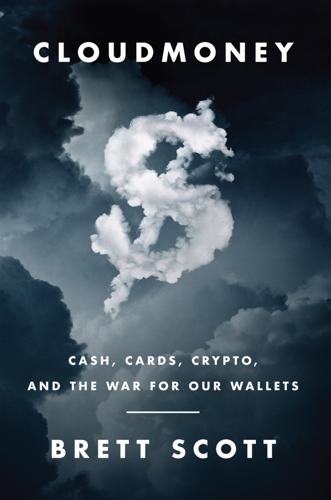
Cloudmoney: Cash, Cards, Crypto, and the War for Our Wallets
by
Brett Scott
Published 4 Jul 2022
It is in this context that ‘financial inclusion’ needs to be analysed. I have already suggested that – in mainstream circles at least – inclusion is more akin to absorption. A small, informal ‘Chama’ savings group managed by elderly Kenyan women is seen as quaint, but inferior to a large-scale app presented at TechCrunch Disrupt by flashy entrepreneurs. Financial inclusion is not envisaged as thousands of Kenyan women’s co-operatives flourishing. Rather, it entails dissolving those informal systems, and onboarding the women into the large-scale corporate systems that will replace their co-operatives. Doing an image search for ‘financial inclusion Africa’ is a rough-and-ready way to confirm this: it brings up pictures from Mastercard’s website, all of rural women smiling into the screens of their mobile phones, presumably looking at an app tethered to a distant data centre (run by people who look nothing like them).
…
Morgan, 8, 96, 150, 156, 227, 232 Jamaica, 42 Japan, 18, 35, 135, 215, 248 Johannesburg, South Africa, 129 Johnson, Alexander Boris, 38 Kazakhstan, 11, 227–9, 233, 247 Keep Cash UK, 262 Kelly, Kevin, 12 Kentridge, William, 144 Kenya, 47, 75, 129, 130–31, 169, 178, 179 Kerouac, Jack, 173, 175 Keynesianism, 80 ‘Kindness is Cashless’, 40 Kiva, 238 Kowloon Walled City, Hong Kong, 216, 219, 220, 226 Kuala Lumpur, Malaysia, 60, 74 Kurzweil, Ray, 153, 252–3 Kyoto, Japan, 135 La Guardia Airport, New York, 128 learning methodology, 163–4 left-wing politics, 7, 184, 191, 211–12, 215 Lehman Brothers, 17–18 Lenddo, 169 Level 39, Canary Wharf, 17, 20, 27, 41, 143 Leviathan (Hobbes), 177 leviathans, 177–84, 215–16 libertarianism, 7, 14, 42, 155, 156, 184 cryptocurrency and, 191, 212, 215–16, 225–6 Libra, 236–41, 245 Litecoin, 218 Lloyds, 72–3, 144, 146 loans, 70–71, 107, 159 artificial intelligence and, 167–8, 172 London, England, 128, 247, 248 Brixton Market, 177 Camberwell, 128 Canary Wharf, 17–18, 20, 41, 62, 211 City of London, 6, 135 Mayor’s Fund, 38 Somali diaspora, 116, 179 Stock Exchange, 24 Underground, 11, 37–8, 86, 87 longevity derivatives, 160 Lonsdale, Joe, 155 Lord of the Rings, The (Tolkien), 19, 155 Los Angeles, California, 101 Luther, Martin, 212 M-Pesa, 79, 109 machine-learning systems, 163–4 Macon, USS, 153 Mafia, 163 Main Incubator, 143 Malaysia, 7, 45, 60, 74 Malick, Badal, 127–8 malware, 32 manifest destiny, 212 ‘Manifesto for Cashlessness’ (Emili), 37 Maputo, Mozambique, 96 Marcus, David, 237, 241 Maréchal, Nathalie, 113 marijuana industry, 101–3 market price, 29, 171 markets, 65, 124–6, 176–80 choice and, 124–6 giant parable, 54 informal, 176–9 oligopolies and, 124–5 payments companies and, 29, 30, 31, 32–3 Marxism, 155, 262 Massachusetts, United States, 46 Massachusetts Institute of Technology (MIT), 7 Mastercard, 30, 37, 39, 77, 91 automatic payments, 149 data, 109, 111 financial inclusion and, 131–2 Wikileaks blockade, 116 Masters, Blythe, 232 Matrix, The (1999 film), 226 Mayfair, London, 6 McDonald’s, 145, 153 Medici family, 135 Melanesia, 255–6 Mercy Corps, 131, 132 Mexico, 42 Microsoft, 7 Azure cloud, 233 Word, 32, 156 middle class, 86, 128, 129 Mighty Ducks, The (1992 film), 234 Military Spouse, 153 millennials, 86, 140 Minority Report (2002 film), 10 mis-categorisations, 167 mist, 30–33 MIT Media Lab, 7 Modi, Narendra, 43, 93 Moffett airfield, California, 153 Monetarism, 80 money creation, 59–63, 67–72, 202 Money Heist (2017 series), 61 money laundering, 42, 116 money users vs. issuers, 50–52 money-passers, 30, 32–3 Monzo, 113, 142 Moon Express Inc., 153 mortgages, 26–7, 94 motor cortex, 248 Mountain View, Silicon Valley, 153 Moynihan, Brian, 38 Mr Robot, 184 Mubarak, Hosni, 116 Mugabe, Robert, 239–41 Mumbai, India, 96 Musk, Elon, 15, 212, 257 mutual credit systems, 259–60 N26, 142 Nairobi, Kenya, 129, 179 Nakamoto, Satoshi, 13, 184–5, 187, 191, 204 NASDAQ, 157, 233 National Aeronautics and Space Administration (NASA), 153 National Arts Festival, 144 National Retail Federation, 86 National Security Agency (NSA), 112, 155 Nationwide, 145–6 Natural Language Processing (NLP), 146 natural market order, 192 Nazarbayev, Nursultan, 227 Neener Analytics, 169 neo-Nazism, 226 nervous system, 20–22, 57, 80, 81, 240, 247–8, 251–2 Nestlé, 24, 28 Netflix, 61 Netherlands, 48, 49, 128–9 Nets Union Clearing Corp, 115 Network Computing, 78 New Age spiritualism, 7, 14, 193, 226 New Jersey, United States, 46 New Scientist, 137 New World Order, 261 New York City, New York, 18, 91–2, 128, 248 La Guardia Airport, 128 Wall Street, 6, 178–9 Nigeria, 43 No Cash Day, 37 no-file clients, 169 Nobel Prize, 93 nomadism, 228 non-seepage, 73 Norway, 35 nudging, 39, 93, 114 Nur-Sultan, Kazakhstan, 11, 227–9 O’Gieblyn, Meghan, 154 Oakdale, California, 101 Occupy movement (2011–12), 211, 215 Office of National Statistics, 83 oil industry, 6, 22–4 oligopolies, 2, 12, 15, 89, 124–5, 142, 151, 180–83, 191 cryptocurrencies and, 229–33, 246 On the Road (Kerouac), 173, 175 OpenBazaar, 229 OpenOil, 24 operating system, 141–2 Oracle, 109 Oxford English Dictionary, 144 Pakistan, 61 Palantir, 155, 157, 226 Panama Papers leak (2016), 81 panopticon effect, 118–19, 172 Papua New Guinea, 191 passive process, 125–6 PATRIOT Act (2001), 111, 179 payments companies, 30, 32–3, 39–41, 77–8, 79 automatic payments, 149 data, 108–9 interpellation, 86–7 plug-ins, 79, 115, 141–2 PayPal, 50, 79, 109, 155, 226, 233–7, 243 New Money campaign (2016), 86–7 Wikileaks blockade, 116 Payter, 31–2 Paytm, 44, 79, 150 Peercoin, 218 Penny for London, 37–8 pension funds, 7, 23 People’s Bank of China, 79, 242 periphery, 28, 248 Peru, 129–30, 176 Peter Diamandis, 153 Philadelphia, Pennsylvania, 41, 133 Pierce, Brock, 234 Piercy, Marge, 150 Pisac, Peru, 129 point-of-sales devices, 40, 77, 130 points of presence, 148 poker games, 91 Poland, 37, 91 police, trust in, 93 Politics of Bitcoin, The (Golumbia), 225 posture, 49 pre-capitalist societies, 55, 215, 251 Premier League, 231 primary system, 50–64 Privacy International, 168 privacy, 2, 43, 44, 46, 47, 104–19 private blockchains, 229, 231 Prohibition (1920–33), 102 promises, 50, 52, 58–9, 61, 70–72, 205–6, 259–60 casino chips, 68–9 deposits as, 69 digital money, 70–72 giant parable, 52–6, 63–4, 188 loans, 70–71, 107, 159 mutual credit systems, 259–60 Promontory Financial Group, 38 Protestantism, 212, 255 psilocybin, 226 psychometric testing, 169 pub quizzes, 91 Pucallpa, Peru, 130, 176, 249 Puerto Rico, 234 Quakers, 135 Quechuan people, 129 Quorum, 232 R3, 233 RAND Corporation, 105 re-localisation, 259 re-skinning, 16, 135–51, 171, 175 Red Crescent, 131 refugees, 131–2 Reinventing Money conference (2016), 31 remittances, 105, 116 Revolut, 140, 142 right-wing politics, 7, 14, 184, 191–3, 211–12, 215, 225–6, 261 rippling credit, 260 risk-adjusted profit, 94 Robert Koch Institute, 34 robotics, 11 Rogoff, Kenneth, 47, 92–3 rolling blackouts, 247 Roman Empire (27 BCE–395 CE), 55–6 Romeo and Juliet (Shakespeare), 29, 30, 32 Rowe, Paulette, 38 Royal Bank of Canada, 158 Royal Bank of Scotland, 62 Russia, 6, 42, 48, 140, 227 Samsung, 11 San Francisco, California, 35, 46, 119, 133, 179, 247 Sān people, 4 Santander, 38 Sardex system, 259 Satoshi’s Vision Conference, 215 Save the Children, 131 savers, 25 Scott, James, 228 seasteading, 156, 216 secondary system, 50, 63–4 self-service, 145–6 SEPA, 80 September 11 attacks (2001), 111 Serbia, 7 sex workers, 96 Shakespeare, William, 29 Shanghai, China, 18, 115, 248 Shazam, 180 Sherlock Holmes series (Doyle), 114, 162, 165, 166 Shiba Inu, 13 Shipibo-Conibo people, 130 Sikoba, 260 Silicon Valley, 7, 9, 139–41, 148, 153, 180, 221 Libra, 237 Singularity, 154–6, 252–3 Silk Road, 227, 229 Singapore, 11, 18, 168, 248 Singularity, 153–6, 226, 252, 252–3 Singularity University, 153–6, 252–3 six degrees of separation theory, 260 skyscrapers, 17–20, 27, 253 slow-boiling frogs, 104 smart cities, 11, 180 smart contracts, 220–24, 258 smart homes, 180 smartphones, 4, 28 financial inclusion and, 95 posture and, 49 Smith, Adam, 251 smoking, 181 Snow Crash (Stephenson), 10 social class, 91–9, 113, 128, 129, 155, 167 Somalia, 116, 179 South Africa, 3–4, 11, 28, 55, 62, 128, 175–6 apartheid, 95 hut tax, 55 National Arts Festival, 144 rolling blackouts, 247 syncretism in, 175–6 South Sudan, 105 Spiegel, Der, 112 Spotify, 166 spread-betting companies, 26 stablecoins, 233–41, 245–6, 255 Standard Bank, 95, 144 states, 42–5, 50–64, 176–85, 215 anti-statism, 42, 184, 215–16 base money, 69 centralisation of power, 15, 180–83 cryptocurrency and, 215 data surveillance, 110–12, 114–15, 155, 168 digital currencies, 242–5 expansion and contraction, 57–8 giant parable, 52–6, 63–4 markets and, 176–80 money issuance, 58–9 primary system, 50, 51, 63 Stockholm syndrome, 121, 131 sub-currencies, 72–3 sub-prime mortgages, 26–7, 94 subsidiary companies, 24, 26–7 Sufism, 91 suits, 124 Sunset Boulevard, Los Angeles, 101 Super Bowl, 8, 261 super-system, 3 supply, 29 surveillance, 2, 7, 8, 10, 15, 33, 39, 42, 72, 104–19, 153–72, 180, 250 artificial intelligence and, 153–72 banking sector and, 108–9 Big Brother, 113–15 CBDCs and, 244, 245 panopticon effect, 118–19, 172 payments censorship, 116–18 predictive systems, 105 states and, 110–12, 114–15, 168 Suspicious Activity Reports (SARs), 111 Sweden, 35, 43, 48, 84, 121 Sweetgreen, 91, 93 SWIFT, 32, 75–6, 80, 108, 112 Switzerland, 35, 108 Symbiosis Gathering, 101 syncing, 195–7, 200–202, 231 syncretism, 175–6 systems failures, 32, 34, 48 Szabo, Nick, 220 Taiwan, 234, 235 Tala, 169 taxation, 55, 57, 110 evasion, 42, 43, 45, 46 TechCrunch Disrupt, 130 Tencent, 2, 7, 114, 178 terrorism, 42, 48, 112, 127 Tether, 234–5, 241 Thaler, Richard, 93 Thatcher, Margaret, 193 Thiel, Peter, 155, 226 thin-file clients, 169 timelines, 197–200 Times of India, 44 tobacco, 181 Tokyo, Japan, 18, 215, 248 Tracfin, 112 transfers, 74–8 transhumanism, 180 Transport for London, 11, 37–8, 86, 87 Transylvania, 65 Trustlines, 260 Twitter, 167, 198 Uber, 2, 149, 177, 179, 237 Uganda, 168 unbanked, 35, 94, 181, 238 underdog, support for, 106 Unilever, 99, 131 United Kingdom American Revolutionary War (1775–83), 60 banking oligopoly, 230 Canary Wharf, 17–18, 20, 41, 62, 211 cash use in, 249 City of London, 6, 135 colonialism, 55, 97, 175–6, 178, 239 digital money system in, 72 GCHQ, 112 HMRC, 110 Premier League, 231 Royal Mint, 60 Somali diaspora, 116, 179 Taylor Review (2016–17), 110 Transport for London, 11, 37–8, 86, 87 United Nations, 14 blockchain research, 222 Capital Development Fund, 37 World Food Programme, 132 United States cash use in, 41, 46, 133 CBDCs and, 244–5, 254 Central Intelligence Agency (CIA), 155 China, relations with, 74–5, 245, 255 data surveillance, 111–12, 155 dollar system, 80, 182, 210, 233–6, 239, 240 Federal Bureau of Investigation (FBI), 111, 155 Federal Reserve, 32, 35, 36, 234 Financial Crimes Enforcement Network, 111 hurricanes in, 36 leviathan complex, 178 marijuana industry, 101–3 NASA, 153 National Security Agency (NSA), 112, 155 Occupy movement (2011–12), 211, 215 PATRIOT Act (2001), 111, 179 Prohibition (1920–33), 102 Revolutionary War (1775–83), 60 Senate, 105–6 September 11 attacks (2001), 111 Singularity University, 153–6 Super Bowl, 8, 261 Wall Street, 6, 178–9 Uruguay, 42 USAID, 45, 127, 178, 179, 245 vending machines, 31–2, 220 Venmo, 79, 243 Ver, Roger, 212, 214, 215 Vienna, Austria, 7 virtual reality, 10 Visa, 15, 30, 31, 37, 39, 40, 41, 44, 77, 80, 127, 174, 255 automatic payments, 149 data, 108, 109, 111, 112 plug-ins, 142 USAID and, 128, 178, 245 Wikileaks blockade, 116 VisaNet, 77 Wall Street, New York City, 6, 178–9 Occupy movement (2011–12), 211, 215 Wall Street (1987 film), 8 Wall Street Journal, 133 Warner, Malcolm, 106 WarOnCash, 37 Weber, Max, 179 WeChat, 79, 109, 114–15, 150 welfare, 43, 113, 118 Wells Fargo, 109, 234, 235 WhatsApp, 75, 198, 237–8, 244, 255 Wikileaks, 116, 183 Wilson, Cody, 216 Winton Motor Carriage Company, 87, 90 Wired, 12 World Economic Forum, 11 World Food Programme, 132 World Health Organisation (WHO), 34 World of Warcraft (2004 game), 234 Xhosa people, 175–6 YouTube, 163, 166, 167, 170 Zambia, 131 Zimbabwe, 11, 239–41, 245 Zuckerberg, Mark, 241 About the Author BRETT SCOTT is an economic anthropologist, financial activist, and former broker.

Insane Mode: How Elon Musk's Tesla Sparked an Electric Revolution to End the Age of Oil
by
Hamish McKenzie
Published 30 Sep 2017
Disruption theory explained why Kodak went from industry ruler to also-ran, why Amazon surpassed Barnes & Noble, and why Netflix obliterated Blockbuster. The tech start-up world from which Musk hails embraces disruption as one of its organizing principles, encouraged in part by the influential blog TechCrunch, which named its flagship conference, TechCrunch Disrupt, for the concept. Silicon Valley’s budding capitalists have long been encouraged to use their software prowess and processes to disrupt existing industries, and hence we have Facebook, which disrupted the news media industry, Airbnb, which disrupted hotels, and crowdfunding, which disrupted traditional investing.
…
See also SolarCity Powerpacks and Powerwalls, 195–197 solar shingles, 253 Superchargers and solar canopies, 56 Solyndra, 230 Sommer, Joerg, 243 Soon, Willie, 212 SpaceX capital for inception of, 24 Dragon spacecraft, 85 early financial issues, 76 future of, 251 innovation of, 6, 17 International Space Station contract of, 76 Musk on moral mission of, 32–33 Tesla engineering space at, 121 Sperling, Dan, 104 Spiegel, Evan, 141 Spiegel, Mark, 228 Sproule, Simon, 155–157 steam-powered cars, 29 Stone, Peter, 213 StopElonFromFailingAgain.com, 229 Straubel, JB on battery costs, 172–174 on car software, 264 Gigafactory and, 203 Musk and, 27 Tesla inception and, 63–66 Tesla’s financial investors and, 77, 78 Tesla’s influence on automobile industry and, 178–181 Strickland, Bill, 243 Strickland, David, 269 Stross, Randall, 34 Summey, Brad, 227 Sunac, 242 Suning, 236 Superchargers China network of, 151 Tesla’s plans for, 184 U.S. network of, 12, 55–59 worldwide network for, 166 Super League, 241 supertanker analogy, 176 Suskewicz, Josh, 55 Tarpenning, Mark, 65–66, 69 Tata Motors, 250 TechCrunch, on Faraday Future, 87–93, 96–97 TechCrunch Disrupt conference, 178–181 Tencent, 98, 111, 127–128, 140–141, 143, 236 TerraE, 200 Tesla, Nikola, 66 Tesla Motors, 63–82. See also financial issues; Gigafactory; Model 3; Model S; Roadster author’s work for, 7–8 Autopilot, 183, 205–213 battery fires in the news, 39–44 in China, 138, 148–153 criticism of, by fossil fuel industry, 205–213, 226–231 Cross Country Rally of, 57–59 direct-sales strategy of, 45–50 Fremont (California) factory of, 79, 108–109 future plans of, 247–255 inception of, 63–66 innovation and influence of, 5–9, 71–74, 159–162 manufacturing problems of, 160 Model X, 56, 160, 247, 248, 264–265 Model Y, 249 Musk as CEO of, 25–27, 36–37, 76 Musk on moral mission of, 32–33 name of, 66 patent availability by, 82 personnel turnover at, 68–70, 90, 111–112, 120–121, 250 Powerpacks and Powerwalls, 195–197 publicity for, 21 San Carlos factory of, 69–70 “secret master plan” of, 197–198 Superchargers, 12, 55–59, 151, 166, 184 Thiel, Peter, 24, 111 3 Series (BMW), 253 Thune, John, 230–231 Toxic 100 Air Polluters Index (University of Massachusetts Amherst), 223–224 Toyoda, Akio, 79 Toyota electric vehicle plans of, 185 Fremont factory bought by Tesla, 79, 108–109 Prius, 104 production volume, 161 Tsusho America (TAI), 108–109 Uber and, 169 Yaris, 164 trucks, autonomous, 270–272 Trump, Donald on environmental issues, 220, 246–247 Ingraham and, 229 Koch brothers and, 225 Thiel and, 111 on trade between U.S. and China, 148 Tse, Bernard, 114, 245 Tsinchuan Automobile Company, 129 Tucker, Preston, 35 Twizy (Renault), 134 tzero (AC Propulsion), 65 Uber, 169, 271–273 UBS, 249 Uisee, 261–262 United Kingdom (UK) EU exit of, 247 Model S sales in, 81 University of California, Berkeley, 272 University of California, Davis, 104 University of California, Los Angeles, 273 University of Massachusetts Amherst, 223–224 University of Michigan, 270 University of Texas, 272 Urban, Tim, 27 urban planning, for autonomous vehicles, 273–274 Urmson, Chris, 267 USA Tavern, 189–190 Valor Equity Partners, 67, 68 Vance, Ashlee, 19, 76 Venrock, 114 Ventures (Google), 271 Virginia Tech, 269 Volkswagen, 161, 167–170, 185, 266–267 Volvo, 185, 270, 271 von Holzhausen, Franz, 76–77, 121 Walker, Jarrett, 34 Wang Chuanfu, 130, 133 Wang Jing, 262–263 Wangjing (China), development in, 144 Wanxiang Group, 71 Warrior, Padmasree, 102 Waymo, 110 Waymo (Google), 266, 271 Weber, Thomas, 77 WeChat (Tencent), 140–141, 144 Weil, Stephan, 167 Wenders, Henrik, 240 Wessner, Tom, 120, 121 Western States Petroleum Association, 32 Wheeler, Jason, 250 White Star program, 33 WhoIsElonMusk.com, 226–228 Who Killed the Electric Car?
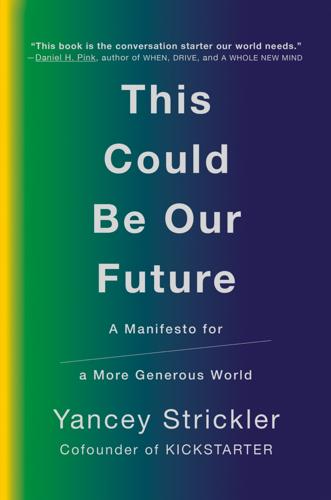
This Could Be Our Future: A Manifesto for a More Generous World
by
Yancey Strickler
Published 29 Oct 2019
He has appeared on NBC, CNN, MSNBC, NPR Marketplace, Planet Money, KCRW, PBS, and the BBC. He's been profiled in Wired, Financial Times, The New York Times, New York Magazine, Forbes, and Vox and has given keynotes at SXSW, the Sundance Film Festival, the Museum of Modern Art, Atlantic Ideas Festival, Techcrunch Disrupt, Web Summit, the Walker Art Center, 92nd Street Y, and more. He was one of Fortune's 40 Under 40, on Vanity Fair's New Establishment list, and a World Economic Forum Young Global Leader. The London Spectator called him "one of the least obnoxious tech evangelists ever." What’s next on your reading list?

Content Everywhere: Strategy and Structure for Future-Ready Content
by
Sara Wachter-Boettcher
Published 28 Nov 2012
Chapter 9 1 http://rfld.me/MhSooY 2 http://rfld.me/QjTkI9 3 Read the Pew 2012 Digital Differences report at http://rfld.me/NT3e23 and the 2011 Smartphones report at http://rfld.me/QbP522. 4 Hear Wroblewski talk about this with Jared Spool at http://rfld.me/Nx5KbI. 5 http://rfld.me/OHU5u3 6 Luke Wroblewski, Mobile First (New York: A Book Apart, 2011). 7 http://rfld.me/MxsmcS Chapter 10 1 Read the whole report at http://rfld.me/QjTUpd. 2 You can watch the entire video of Parks and U.S. CIO Steven Van Roeckel launching the initiative at Techcrunch Disrupt on May 23, 2012, here: http://rfld.me/Olewe3. Chapter 11 1 If you haven’t yet, do read Koczon’s whole article from A List Apart: http://rfld.me/MhSwou. 2 See Instapaper’s publisher tools at http://rfld.me/PkjiXJ. Chapter 12 1 From the Digital Government report, available at http://rfld.me/QjTUpd.

Whistleblower: My Journey to Silicon Valley and Fight for Justice at Uber
by
Susan Fowler
Published 18 Feb 2020
It was a stereotypical small technology startup in every way, the kind of half company, half frat house immortalized in the show Silicon Valley. Plaid’s founders, Zach and William, were two twentysomethings from well-to-do families who’d written their software application, which aggregated financial data, after graduating from college. They entered their app in the infamous TechCrunch Disrupt competition and won. When I joined the company, they’d just raised their Series A round of funding. I was the thirteenth or fourteenth employee. When I walked into the office on my first day, I felt like I was part of something special, something fun. It was a tiny company, and all of my new coworkers—who were around the same age as I was—seemed genuinely excited about what they were working on.
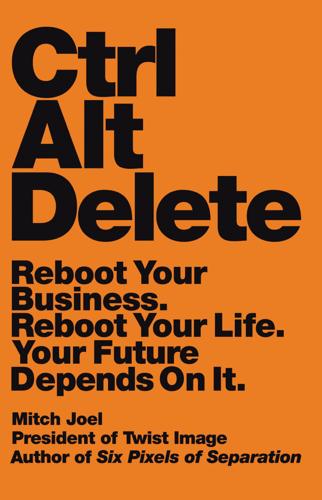
Ctrl Alt Delete: Reboot Your Business. Reboot Your Life. Your Future Depends on It.
by
Mitch Joel
Published 20 May 2013
In some instances, that “solution” still looks and feels crude to the traditional companies who have dominated that industry for decades (too bad for them). It seems like Judy Shapiro (chief brand strategist at CloudLinux and blogger at Trenchwars) was busy asking herself some very similar questions at the TechCrunch Disrupt conference in New York last year. In her Advertising Age op-ed piece “When Hacker Culture Collides with Business Reality,” she sees some major opportunities for marketing companies that my industry is not pursuing, and—because marketers are not doing anything about it—they are all but allowing (and enabling) small startups to take them on: “While the tech boys are breaking their toys—it is often the professional marketers (aka adults) who are left cleaning up the operational mess brought on by a lack of metrics and operational scalability.
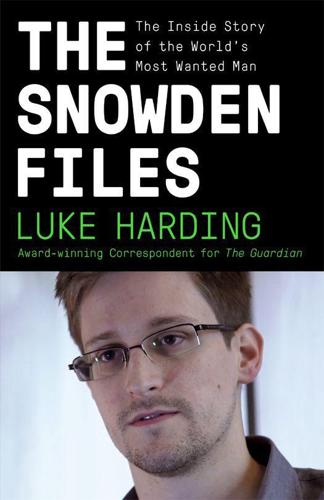
The Snowden Files: The Inside Story of the World's Most Wanted Man
by
Luke Harding
Published 7 Feb 2014
Throughout the summer the tech companies had pumped out the same message: that the NSA was coercing them, legally, to co-operate. Any data they handed over wasn’t done voluntarily, but in response to a court-approved stick-up. A few days before their appearance at the review panel, Silicon Valley CEOs had gathered at the TechCrunch Disrupt Conference in San Francisco. The mood was mutinous. Yahoo’s Marissa Mayer said her company had to obey FISA court orders, even though it didn’t like them: ‘When you lose and don’t comply, it’s treason.’ Facebook’s Mark Zuckerberg put it succinctly. The ‘government blew it,’ he said. During meetings with the review panel, however, the tech companies didn’t say anything about restricting NSA surveillance.
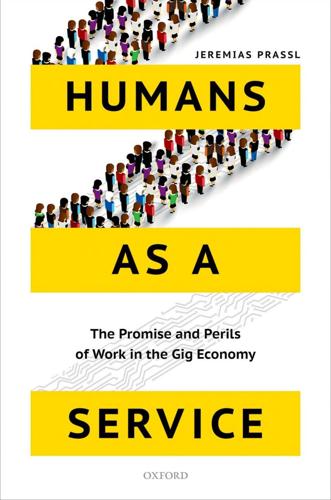
Humans as a Service: The Promise and Perils of Work in the Gig Economy
by
Jeremias Prassl
Published 7 May 2018
In its original, virtuous, version, Christensen described ‘a process whereby a smaller company with fewer resources is able to successfully challenge established incumbent businesses’.30 Contrast this with the observations by technology writer and one-time host of technology start-up competition ‘TechCrunch Disrupt’ Paul Bradley Carr: The original Silicon Valley meaning of a disruptive company was one that used its small size to shake up a bigger industry or bloated competitor. Increasingly, though, the conference stage was filled with brash, Millennial entrepreneurs vowing to ‘Disrupt’ real-world laws and regulations in the same way that me stealing your dog is Disrupting the idea of pet ownership.
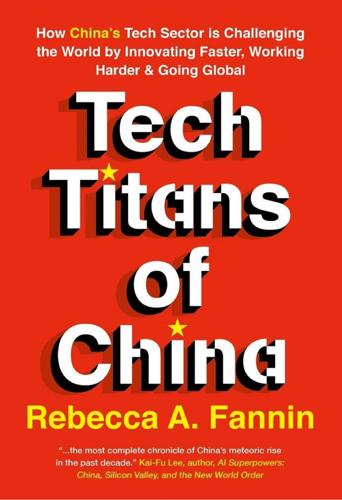
Tech Titans of China: How China's Tech Sector Is Challenging the World by Innovating Faster, Working Harder, and Going Global
by
Rebecca Fannin
Published 2 Sep 2019
The number of deals jumped 42 percent to 5,066 in 2018, the fifth consecutive year of increases.23 Though I’m familiar with Southeast Asia from travels and interviews in the region, I was still amazed by the budding entrepreneurial culture at a huge and flashy tech summit in Bangkok, where I was a speaker. The event, run by local tech and business communications group TechSauce, drew hundreds of startups and venture investors from nearby hubs and some from the West. It can make the annual TechCrunch Disrupt conference in San Francisco seem small and not nearly so dazzling by comparison. Southeast Asia is “another China-sized opportunity,” contends Nazar Yasin, founder of investment firm Rise Capital, which funds expanding internet businesses in emerging markets. Speaking at a recent Silicon Dragon forum in Hong Kong, investor Yasin pointed out that Southeast Asia startups accounted for 5 of the 12 largest internet financings globally in 2017 and three of the largest ones globally in 2018.

The Internet Is Not the Answer
by
Andrew Keen
Published 5 Jan 2015
Fewer than one in ten venture-funded startups in Silicon Valley are led by women, with only 3% of that venture money going to all-female teams.42 An estimated 2–4% of engineers at tech companies are women,43 and, according to Measure of America, these Silicon Valley women earn less than half of what Silicon Valley men do.44 Equally troubling, there is a persistent sexist culture among many of the young male programmers, the so-called tech bros, who openly treat women as sexual objects and unashamedly develop pornographic products such as the “Titshare” app introduced at the 2013 TechCrunch Disrupt show in San Francisco,45 designed to humiliate their female colleagues. This misogynistic culture extends throughout the Valley, with bias claims surging in 2013 against the male-dominated tech industry46 and even a blue-chip venture capital firm like John Doerr and Tom Perkins’s KPCB becoming embroiled in a discrimination suit with a former female investment partner.47 The Internet hasn’t really benefited most San Franciscans, either.

Live Work Work Work Die: A Journey Into the Savage Heart of Silicon Valley
by
Corey Pein
Published 23 Apr 2018
“At the time, we were a really small startup and, you know, it didn’t seem like we were doing anything wrong or anything illegal, and so it was quite upsetting,” he said. “I was like, ‘Uh-oh, maybe we’re going to be in really big trouble here.’” It didn’t help, perhaps, that he had announced his intentions onstage at the highest-profile startup competition in the world, TechCrunch Disrupt. But where there was cash, there was hope. Coached by the investors who had poured $84 million into the startup, Zenefits “went to the mat” with the government of Utah. Zenefits staged a petition and made itself a techie cause célèbre. Then the company hired “some folks” in Utah, as Conrad put it, to “kind of help us out on the ground and make introductions so that we could sort of plead our case to the various different legislators.”
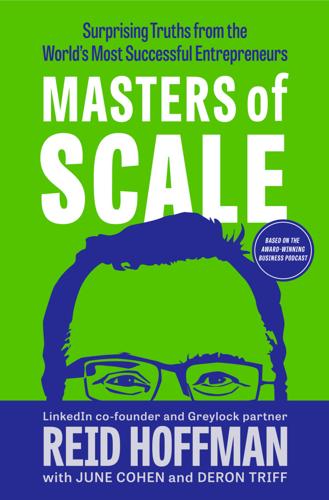
Masters of Scale: Surprising Truths From the World's Most Successful Entrepreneurs
by
Reid Hoffman
,
June Cohen
and
Deron Triff
Published 14 Oct 2021
Both she and Kevin gave out their cellphone numbers where they could be reached to handle their customers’ real-time issues and complaints. By reacting to all this feedback fast, Eventbrite was able to create a revenue stream from the long tail of small-event organizers that their competitors had left on the table. Pretty soon, those TechCrunch meetups Eventbrite helped ticket grew into the TechCrunch Disrupt Conference—a dominant feature on the tech industry calendar. Year after year, Eventbrite found a larger, equally vocal customer base, helping them further refine their product, setting them up to service bigger and more complex events. Eventbrite was evolving in sync with its customers. But as much as Julia and her team paid attention to what customers were saying, the real learnings came from closely monitoring what customers were doing with Eventbrite, even as they moved into unexpected new areas.
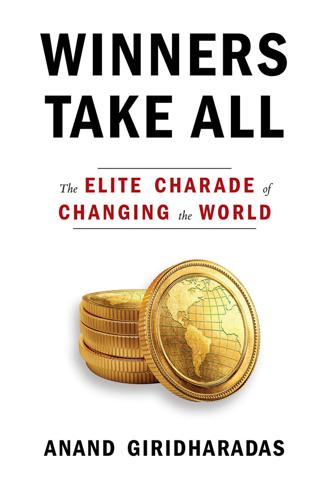
Winners Take All: The Elite Charade of Changing the World
by
Anand Giridharadas
Published 27 Aug 2018
The idea of doing well for yourself by doing good for others is a gospel, one that is celebrated and reevangelized at an unending chain of tent revivals around the world. The citizens of MarketWorld can reinforce the mission at conference after conference: Davos, TED, Sun Valley, Aspen, Bilderberg, Dialog, South by Southwest, Burning Man, TechCrunch Disrupt, the Consumer Electronics Show, and now, at Summit at Sea, on a cruise ship full of entrepreneurs wishing to change the world. Summit at Sea was a four-day-long maritime bacchanal honoring the credo of using business to change the world—and perhaps of using “changing the world” to prosper in business.
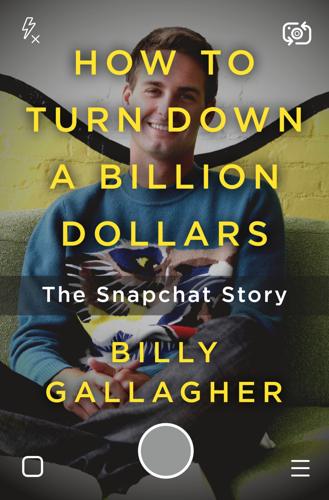
How to Turn Down a Billion Dollars: The Snapchat Story
by
Billy Gallagher
Published 13 Feb 2018
When Vergence agreed to sell, Miller called their first investor, early Facebook executive Charlie Cheever, and said, “We sold the company. We can’t tell you who. You’ll get a check in the mail.” The division’s future depended just as much on its technical progress as it did on Evan’s evolving view of wearable technology. In September 2013, Evan spoke at the TechCrunch Disrupt conference, when Google Glass was near the height of its hype; he said Snapchat was not even considering building an app for Google Glass, saying it felt “invasive,” like “a gun pointed at you.” It remained to be seen if Vergence would ever launch a real product into the world or just stay hidden as an internal Snapchat experiment.
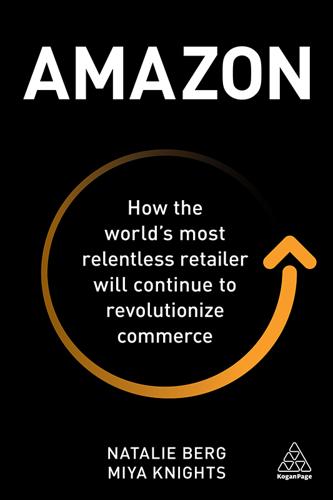
Amazon: How the World’s Most Relentless Retailer Will Continue to Revolutionize Commerce
by
Natalie Berg
and
Miya Knights
Published 28 Jan 2019
In 2017, independent German retailer HIT Sütterlin, based in Aachen, tested an Alexa-based store customer service system to communicate with its customers, offering information on offers and products, in conjunction with digital displays, based on a customer’s voice prompts. The ‘Alexa Shop Assist’ concept developed just for the TechCrunch Disrupt 2017 Hackathon, using Alexa-powered hardware, the Alexa Skill Set and Voice Service, AWS Lambda platform and an iOS app, enabled customers to ask where a certain item is and be told which aisle to go to. It also aimed to track a customer around the store based on where questions are asked. The store of the future will certainly offer digitally empowered assistance.
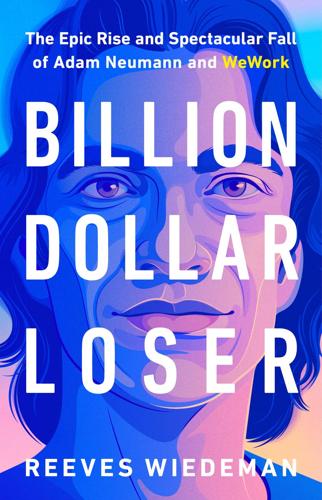
Billion Dollar Loser: The Epic Rise and Spectacular Fall of Adam Neumann and WeWork
by
Reeves Wiedeman
Published 19 Oct 2020
Beyond making the company’s core business more efficient, the hope was that one or another of these new technologies could help WeWork figure out how to diversify its revenue. Conference room sensors might detect when members used rooms without paying for them. Masa and Adam talked up the idea of a “virtual membership,” whereby people would join the WeWork community without renting a desk. At TechCrunch Disrupt in 2017, Adam crowed about the launch of WeWork’s Services Store, which promised again to turn the company into a middleman hawking everything from Salesforce software to Lyft discounts. None of these avenues proved fruitful. By the end of 2017, services made up just 5 percent of WeWork’s revenue.
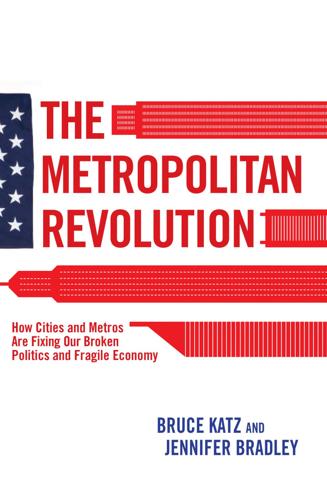
The Metropolitan Revolution: How Cities and Metros Are Fixing Our Broken Politics and Fragile Economy
by
Bruce Katz
and
Jennifer Bradley
Published 10 Jun 2013
Hamilton, “Federalist No. 1,” p. 1. 10-2151-2 notes.indd 241 5/20/13 7:00 PM 242 NOTES TO PAGES 193–204 CHAPTER 9 The Jack Dorsey quote at the beginning of the chapter is taken from Laurie Segall, “Square CEO Jack Dorsey: I Never Wanted to Be an Entrepreneur,” CNN Money, September 10, 2012 (www.money.cann.com/2012/09/10/technology/startups/jackdorsey-techcrunch-disrupt/index.html). 1. The historian Lewis Mumford writes, “The city, as one finds it in history, is the point of maximum concentration for the power and culture of a community. . . . The city is the form and symbol of an integrated social relationship: it is the seat of the temple, the market, the hall of justice, the academy of learning.
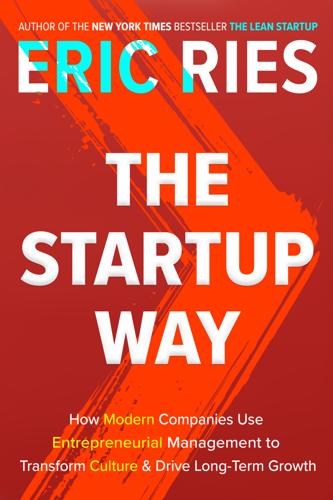
The Startup Way: Making Entrepreneurship a Fundamental Discipline of Every Enterprise
by
Eric Ries
Published 15 Mar 2017
Let’s form a team that has your best people on it and bring people in from the outside who have the skills you want, and then have that team execute [operations] in a Lean Startup mode to do more than either could do separately and deliver successfully against that mission.”5 The program itself was an experiment. No one knew if it would even be possible to get Silicon Valley people into government, so that became the team’s first hypothesis. To test it, Park got on a plane and announced the new program at TechCrunch Disrupt, a gathering of entrepreneurs, investors, hackers, and tech fans. The response was overwhelming—nearly seven hundred people applied.6 Park ended up selecting eighteen fellows for that first class and “just throwing them into a small number of projects, and [we] were off to the races to see the kind of results it delivered,” says Van Dyck.

The Equality Machine: Harnessing Digital Technology for a Brighter, More Inclusive Future
by
Orly Lobel
Published 17 Oct 2022
Some of her accounts seemed larger than life, and journalists have raised questions about the accuracy of her life story, but what matters is that DiCarlo represented something: a self-made sex tech CEO whose outspokenness, outgoing character, and charisma have a goal—to rid female sexuality of a sense of shame or hiding. She appeared at Women in Tech Sweden and at TechCrunch Disrupt. She was described by one journalist as “the X-rated version of Steve Jobs, as much on display as the breakthrough tech that she’d invented.” The industry dynamic still seems to lead women, even at the top, to depict themselves in pornified ways, and DiCarlo is no exception. Prior to DiCarlo, products marketed to women at CES typically fell along conventional gendered lines—think Roomba vacuum cleaners, Bluetooth-connected breast pumps, and smart baby monitors.
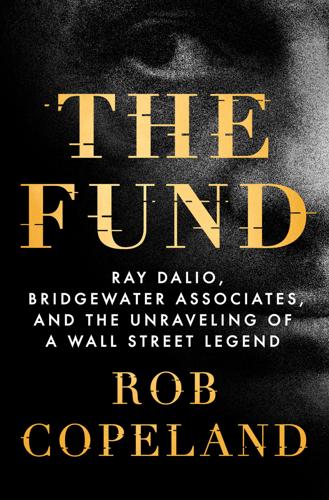
The Fund: Ray Dalio, Bridgewater Associates, and the Unraveling of a Wall Street Legend
by
Rob Copeland
Published 7 Nov 2023
In summer 2019 Dalio turned seventy, having spent the previous ten years in a near-constant fracas around his transition out of the firm and the systemization of The Principles. He seemed to find increasing pleasure in time away, when he could bask in the attention from being a bestselling, self-help hedge fund guru. Invitations rained in for speaking engagements worldwide—not all focused on finance, either. He spoke at the sprawling TechCrunch Disrupt conference in San Francisco about technology, of all topics, perhaps surprisingly given the continued fallibility of PriOS, and signed copies of his book for a long line of well-wishers afterward. In an interview with TechCrunch, he said, “I don’t want more success. I don’t want money.” The author of the piece editorialized two paragraphs later, “As Ray Dalio looked me in the eyes recently and said those words, I believed in his sincerity.”
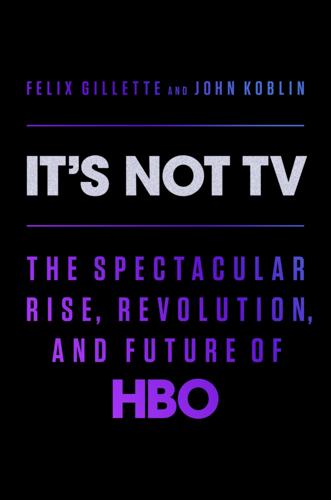
It's Not TV: The Spectacular Rise, Revolution, and Future of HBO
by
Felix Gillette
and
John Koblin
Published 1 Nov 2022
“I got a lot of material from that. It was very funny to watch it all collapse.” In 2012, while researching an idea for a show for HBO, Judge visited a bunch of campuses of tech companies like Google and Facebook and attended sweaty, testosterone-drenched congregations of true believers like TechCrunch Disrupt. “The more we dug into it, the more interesting and hilarious and absurd it was,” Judge says. Based on the research, Judge created a pilot with Dave Krinsky and John Altschuler, who he’d previously worked with on King of the Hill. When HBO did not love their first stab at satire, Krinsky and Altschuler stepped aside.
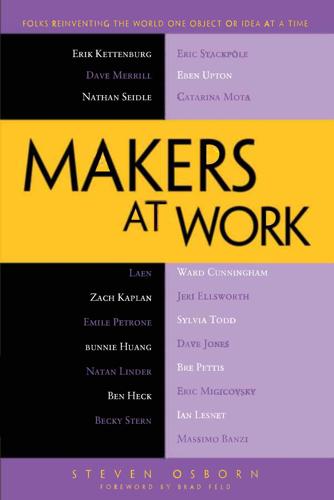
Makers at Work: Folks Reinventing the World One Object or Idea at a Time
by
Steven Osborn
Published 17 Sep 2013
Merrill: I think that there’s a ton of interesting things. Let me name three in particular that I think are really cool that are just getting off the ground. One is some guys making a motorized skateboard, Boosted Boards.4 They’re a group of grad students from Stanford that showed this project at the TechCrunch Disrupt conference last year. They have this super cool motorized skateboard that you can control—it looks really fun. You can basically make the skateboard your commuting vehicle because it will even go up hills. I’m also really interested in this new surge of quadcopter and RC helicopter flying machines that are appearing.

American Girls: Social Media and the Secret Lives of Teenagers
by
Nancy Jo Sales
Published 23 Feb 2016
Universal Journal of Educational Research 1, no. 1 (2013): 1–9. Ohlheiser, Abby. “Meet ‘Titstare,’ the Tech World’s Latest ‘Joke’ from the Minds of Brogrammers.” The Wire. Last modified September 8, 2013. http://www.thewire.com/technology/2013/09/titstare-tech-worlds-latest-brogrammer-joke-techcrunch-disrupt/69171/. Orpinas, Pamela, Caroline McNicholas, Lusine Nahapetyan, and Alana Vivolo-Kantor. “The Myth of ‘Mean Girls.’ ” StopBullying blog. Entry posted September 10, 2015. http://www.stopbullying.gov/blog/2015/09/10/myth-mean-girls. Paglia, Camille. Sex, Art, and American Culture: Essays. New York: Vintage Books, 1992.